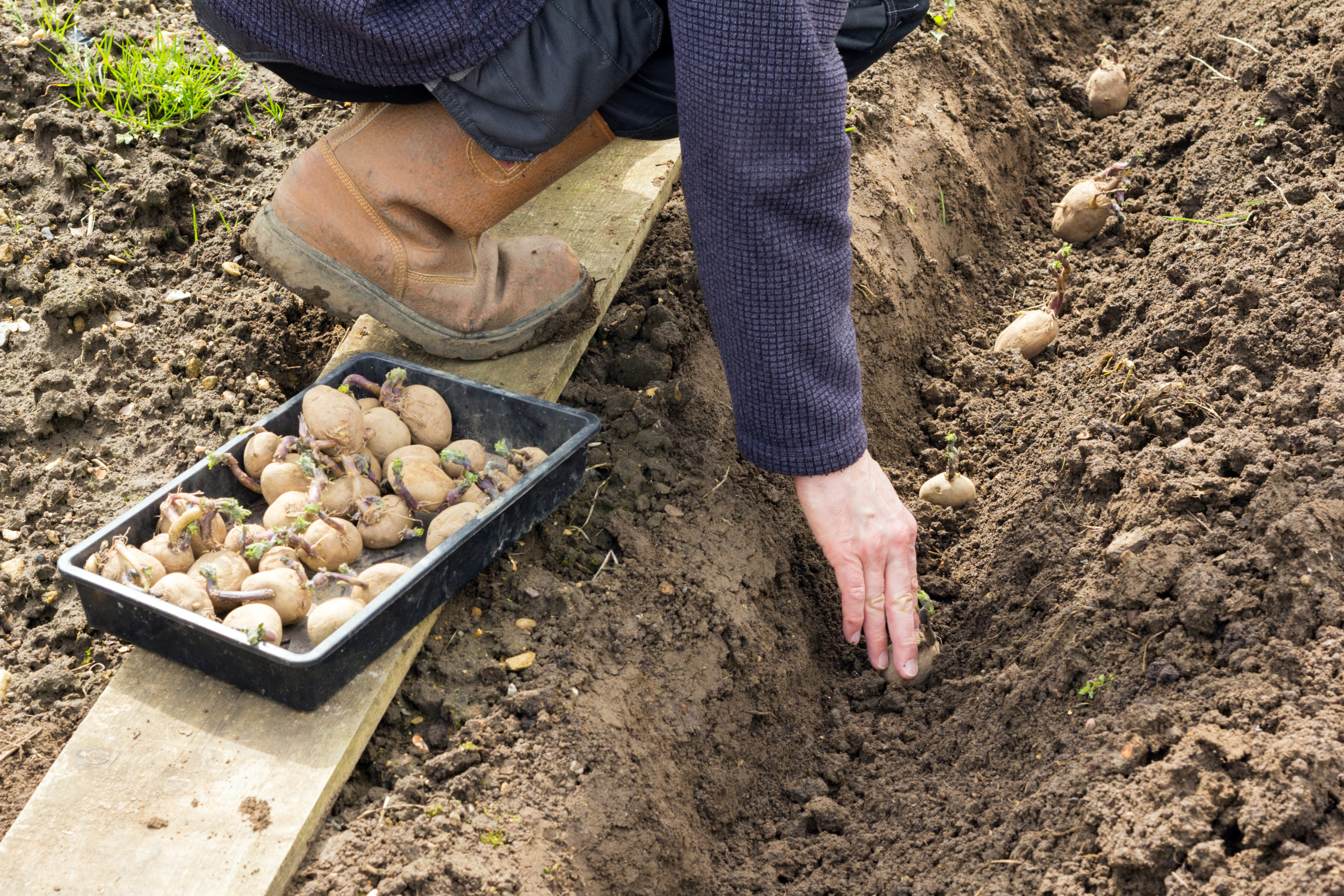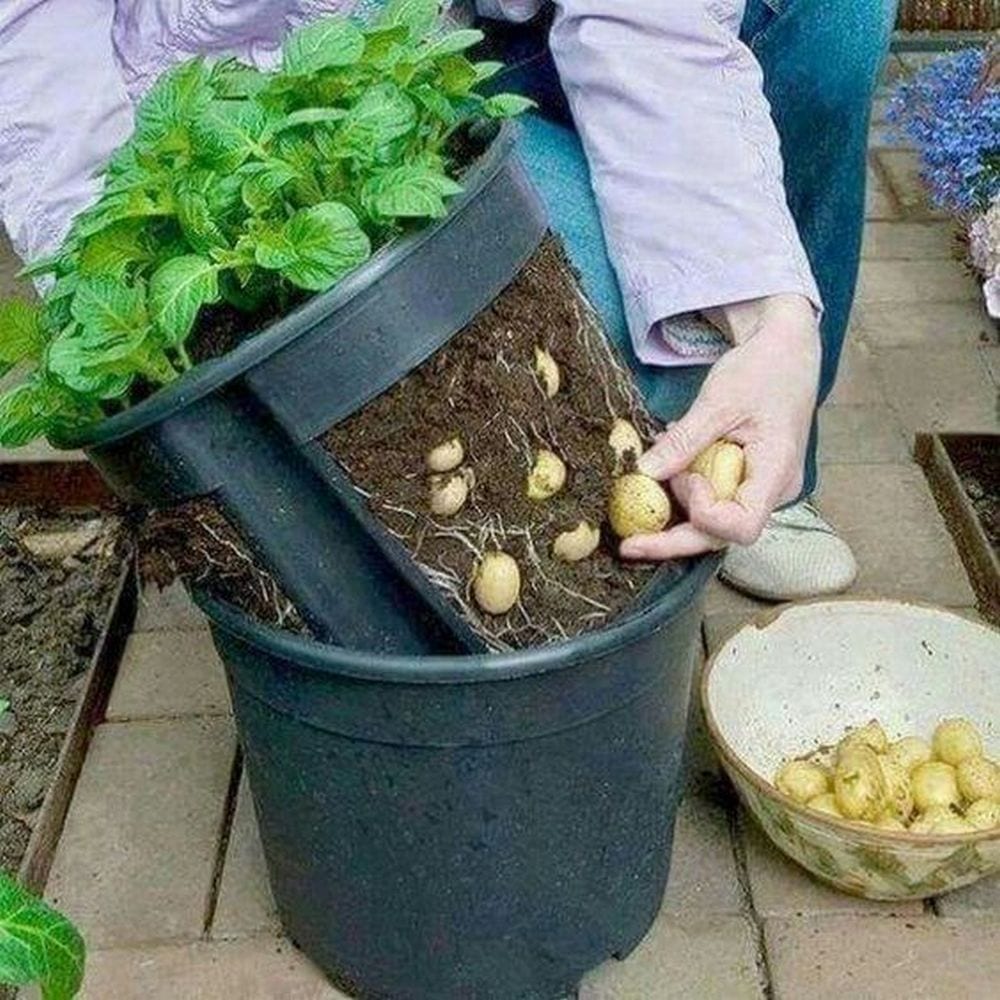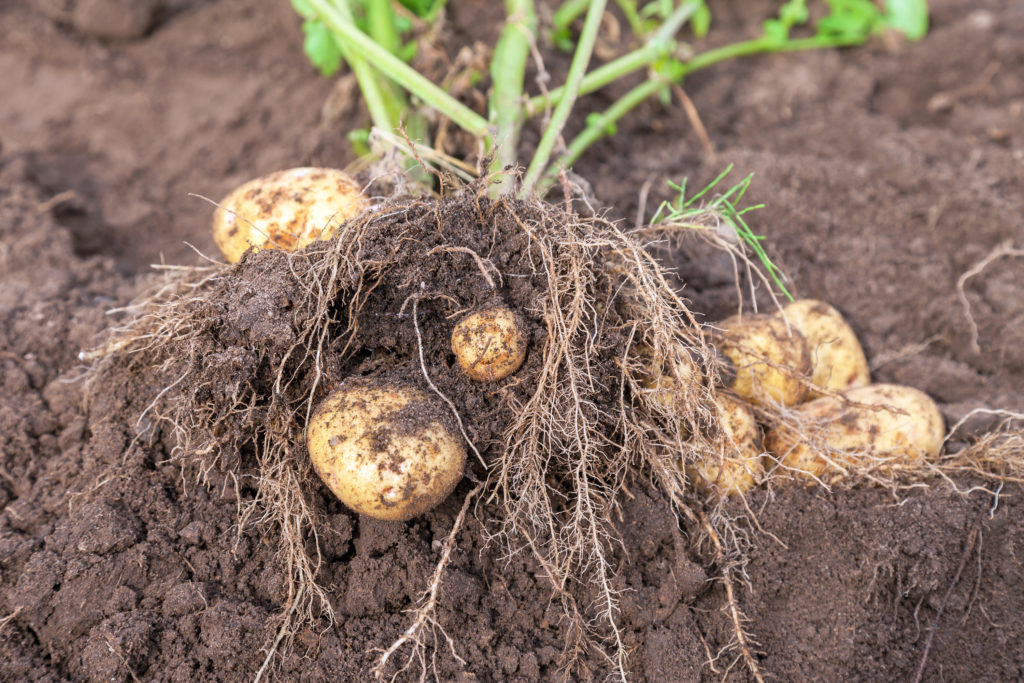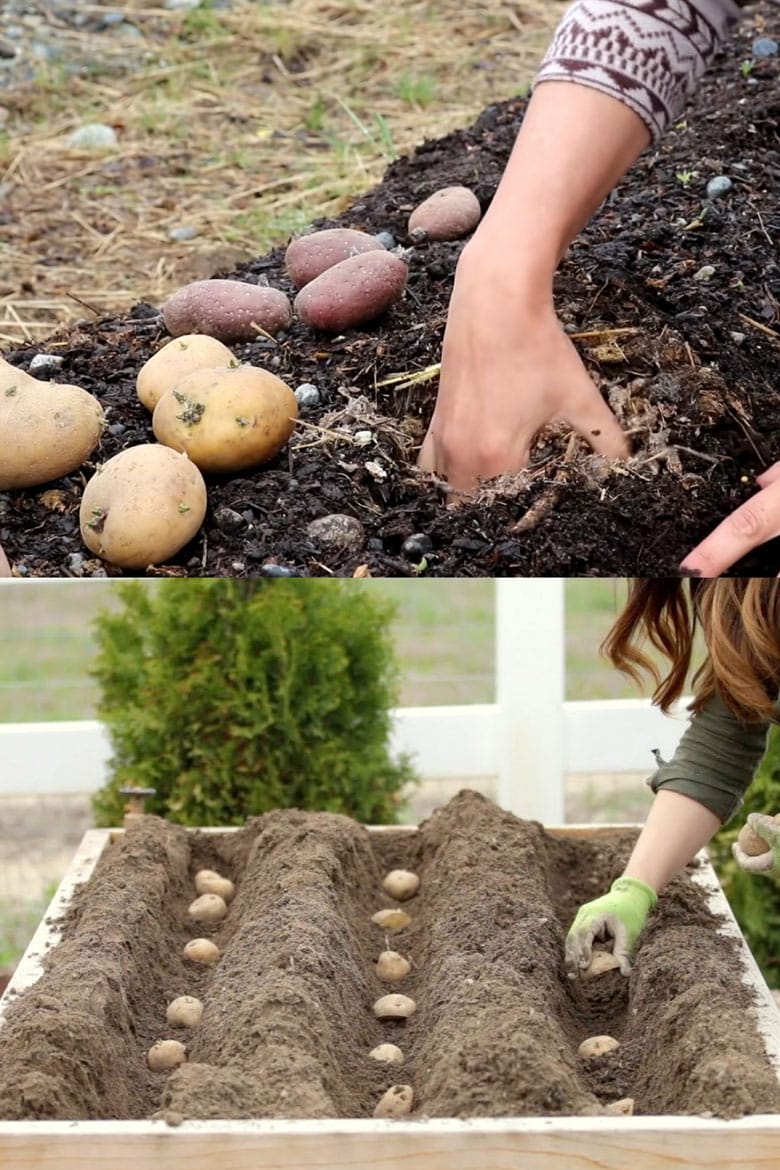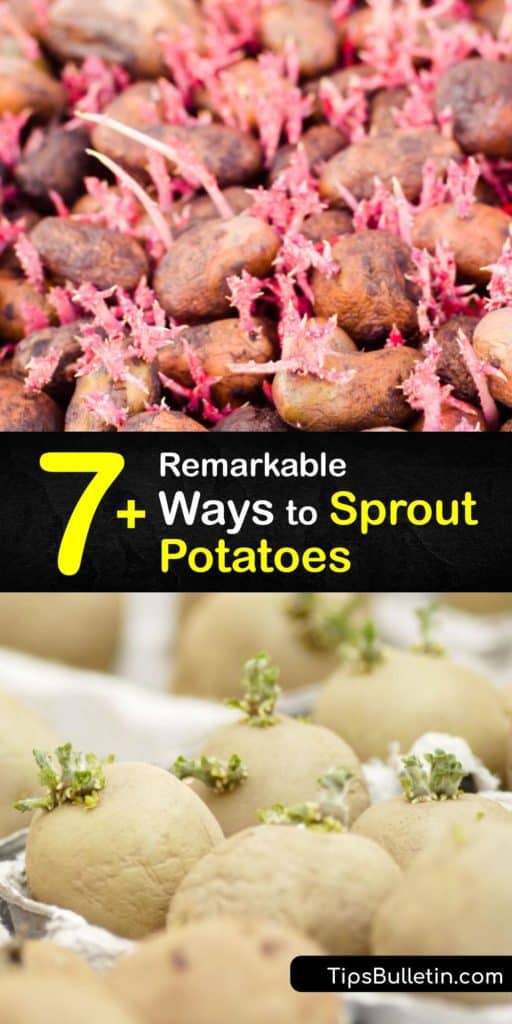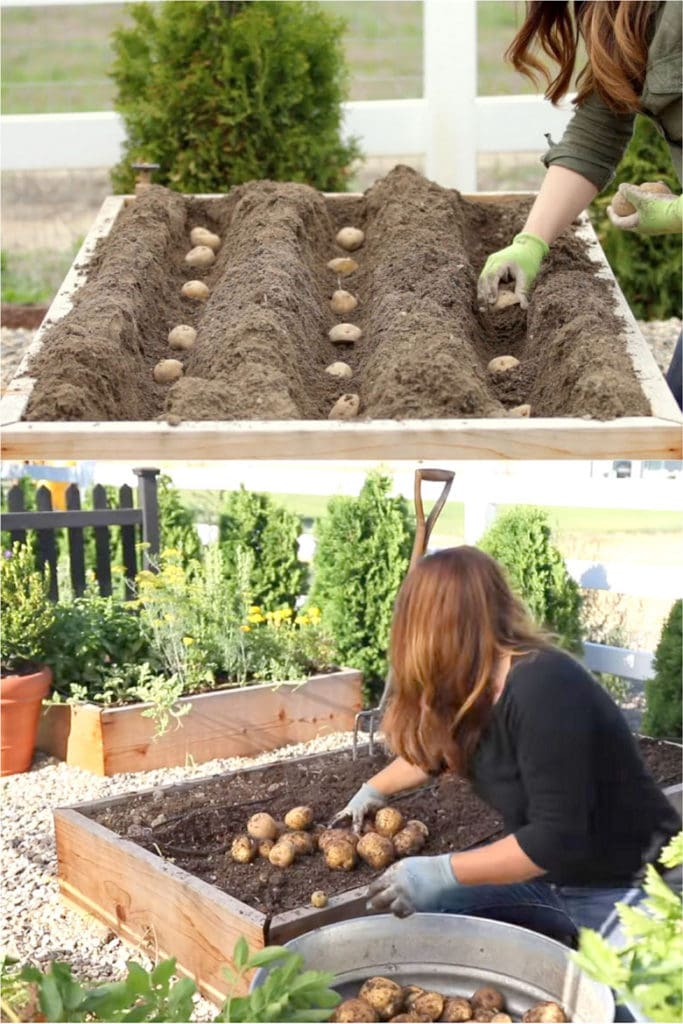Understanding the Importance of Planting Season
Planting potatoes at the right time is crucial for a successful harvest. The ideal planting season varies depending on the region, climate, and weather conditions. In general, potatoes are a cool-season crop, which means they thrive in temperatures between 40°F and 70°F (4°C and 21°C). Planting too early or too late can lead to reduced yields, poor quality tubers, and increased susceptibility to disease.
Weather conditions, such as frost, drought, and excessive rainfall, can also impact potato growth. For example, a late frost can damage or kill young potato plants, while a prolonged drought can reduce tuber size and quality. Understanding the local climate and weather patterns is essential for determining the best time to plant potatoes.
Daylight hours also play a critical role in potato growth. Potatoes require a certain amount of daylight to produce tubers, and the duration of daylight hours varies throughout the year. In general, potatoes require at least 12 hours of daylight to produce a decent crop.
So, when do you plant potatoes? The answer depends on your location and climate. In general, it’s best to plant potatoes in early spring, about 2-4 weeks before the last frost date. This allows the plants to mature before the hot summer weather sets in. In regions with a long growing season, potatoes can also be planted in late summer or early fall, about 8-10 weeks before the first frost date.
By understanding the importance of planting season and the factors that affect potato growth, you can make informed decisions about when to plant your potatoes. This will help you achieve a bountiful harvest and enjoy a successful potato crop.
How to Determine the Ideal Planting Time for Your Region
Determining the best time to plant potatoes in your specific region requires consideration of several factors, including climate, frost dates, and soil conditions. To ensure a successful harvest, it’s essential to understand the local climate and weather patterns.
One way to determine the ideal planting time is to check the average frost dates for your area. In general, it’s best to plant potatoes 2-4 weeks before the last frost date. This allows the plants to mature before the hot summer weather sets in. You can check the average frost dates for your area by consulting a local nursery or extension office.
Soil temperature is also an essential factor to consider when determining the ideal planting time. Potatoes prefer a cool soil temperature, typically between 40°F and 55°F (4°C and 13°C). You can check the soil temperature by inserting a thermometer into the soil or by using an online soil temperature guide.
Soil moisture is another critical factor to consider. Potatoes require consistent moisture, especially during the tuber formation stage. You can check the soil moisture by inserting your finger into the soil or by using a soil moisture meter.
In addition to climate and soil conditions, the specific variety of potato you’re planting also plays a role in determining the ideal planting time. Some varieties, such as ‘Russet’ and ‘Yukon Gold’, are more tolerant of cooler temperatures and can be planted earlier in the season. Other varieties, such as ‘Red Pontiac’ and ‘Katahdin’, prefer warmer temperatures and should be planted later in the season.
When do you plant potatoes in your region? The answer depends on your specific climate and weather conditions. By understanding the local climate and weather patterns, you can make informed decisions about when to plant your potatoes and ensure a bountiful harvest.
Here are some general guidelines for determining the ideal planting time for potatoes in different regions:
- In the northern United States, plant potatoes in early spring, about 2-4 weeks before the last frost date.
- In the southern United States, plant potatoes in late winter to early spring, about 4-6 weeks before the last frost date.
- In regions with a long growing season, plant potatoes in late summer or early fall, about 8-10 weeks before the first frost date.
By following these guidelines and considering the specific climate and weather conditions in your region, you can determine the ideal planting time for your potatoes and enjoy a successful harvest.
The Role of Climate and Weather in Potato Planting
Climate and weather patterns play a significant role in potato growth and development. Temperature fluctuations, rainfall, and sunlight exposure can all impact the health and productivity of potato plants.
Temperature is a critical factor in potato growth. Potatoes are a cool-season crop, and they thrive in temperatures between 40°F and 70°F (4°C and 21°C). Temperatures above 75°F (24°C) can lead to reduced yields and poor quality tubers. On the other hand, temperatures below 40°F (4°C) can slow down growth and increase the risk of disease.
Rainfall is also essential for potato growth. Adequate moisture is necessary for tuber formation and development. However, excessive rainfall can lead to waterlogged soil, which can cause roots to rot and reduce yields. Drought, on the other hand, can cause stress to the plants, leading to reduced yields and poor quality tubers.
Sunlight exposure is also crucial for potato growth. Potatoes require full sun to partial shade, and they thrive in areas with high light intensity. However, excessive sunlight can cause scorching of the leaves and reduce yields.
Weather patterns, such as wind and frost, can also impact potato growth. Wind can cause damage to the plants, while frost can kill or damage the tubers. It’s essential to protect the plants from extreme weather conditions to ensure a successful harvest.
Understanding the role of climate and weather in potato planting can help you make informed decisions about when to plant your potatoes. By considering the local climate and weather patterns, you can determine the best time to plant your potatoes and ensure a bountiful harvest.
Here are some tips for managing climate and weather conditions when planting potatoes:
- Choose a location with full sun to partial shade.
- Plant potatoes in well-draining soil to prevent waterlogging.
- Use mulch or other coverings to protect the plants from extreme temperatures and weather conditions.
- Monitor weather forecasts and be prepared to protect the plants from frost and other extreme weather conditions.
By following these tips and considering the local climate and weather patterns, you can ensure a successful potato harvest and enjoy a bountiful yield.
Preparing the Soil for Optimal Potato Growth
Soil preparation is a crucial step in growing potatoes. The right soil conditions can make all the difference in the health and productivity of your potato crop. In this section, we’ll discuss the importance of soil preparation and provide tips on how to test soil pH, amend soil with organic matter, and create a well-draining soil structure.
Soil pH is a critical factor in potato growth. Potatoes prefer a slightly acidic to neutral soil pH, ranging from 4.5 to 7.0. If your soil pH is too high or too low, it can affect the availability of essential nutrients for your potato plants. You can test your soil pH using a soil testing kit or by sending a sample to a laboratory for analysis.
Once you’ve determined your soil pH, you can amend it with organic matter to create a more favorable growing environment. Organic matter such as compost, manure, or peat moss can help to improve soil structure, increase the water-holding capacity, and provide essential nutrients for your potato plants.
Creating a well-draining soil structure is also essential for optimal potato growth. Potatoes don’t like wet feet, so it’s essential to ensure that your soil drains well to prevent waterlogging. You can improve soil drainage by adding organic matter, using raised beds, or installing a drainage system.
Here are some tips for preparing your soil for optimal potato growth:
- Test your soil pH and amend it if necessary.
- Add organic matter such as compost, manure, or peat moss to improve soil structure and fertility.
- Create a well-draining soil structure by adding organic matter, using raised beds, or installing a drainage system.
- Avoid over-tilling, which can damage soil structure and reduce fertility.
By following these tips, you can create a favorable growing environment for your potato crop and ensure a bountiful harvest. Remember to plant your potatoes at the right time, and with the right soil conditions, you’ll be on your way to growing delicious and healthy potatoes.
Choosing the Right Potato Variety for Your Planting Schedule
With so many potato varieties to choose from, selecting the right one for your planting schedule can be overwhelming. But, by understanding the different types of potato varieties and their respective planting schedules, you can make an informed decision and ensure a bountiful harvest.
There are three main types of potato varieties: early, mid-season, and late. Early varieties mature in about 70-100 days and are ideal for planting in early spring or late summer. Mid-season varieties mature in about 100-120 days and are suitable for planting in late spring or early summer. Late varieties mature in about 120-150 days and are best for planting in late summer or early fall.
Some popular early varieties include ‘Red Pontiac’, ‘Yukon Gold’, and ‘Katahdin’. These varieties are known for their high yields and are ideal for planting in areas with a short growing season.
Mid-season varieties, such as ‘Russet’ and ‘Shepody’, are popular for their high yields and disease resistance. They are suitable for planting in areas with a moderate growing season.
Late varieties, such as ‘Idaho’ and ‘Kennebec’, are known for their high yields and are best for planting in areas with a long growing season.
When choosing a potato variety, consider factors such as climate, soil type, and desired harvest period. It’s also essential to select a variety that is resistant to diseases and pests common in your area.
Here are some tips for choosing the right potato variety for your planting schedule:
- Consider the length of your growing season and choose a variety that matures within that timeframe.
- Select a variety that is resistant to diseases and pests common in your area.
- Choose a variety that is suitable for your climate and soil type.
- Consider the desired harvest period and choose a variety that meets your needs.
By choosing the right potato variety for your planting schedule, you can ensure a bountiful harvest and enjoy a successful potato crop.
Common Mistakes to Avoid When Planting Potatoes
Planting potatoes can be a rewarding experience, but it’s not without its challenges. To ensure a successful harvest, it’s essential to avoid common mistakes that can lead to poor yields, disease, and pest problems. In this section, we’ll highlight some common mistakes to avoid when planting potatoes.
One of the most common mistakes is planting potatoes too early or too late. Planting too early can lead to frost damage, while planting too late can result in reduced yields. It’s essential to check the weather forecast and soil temperature before planting to ensure optimal conditions.
Inadequate soil preparation is another common mistake. Potatoes require well-draining, loose soil to grow. If the soil is too dense or waterlogged, it can lead to poor yields and disease problems. Make sure to test your soil pH and amend it if necessary, and add organic matter to improve soil structure.
Poor seed quality is also a common mistake. Using low-quality seed potatoes can lead to poor yields and disease problems. Make sure to purchase high-quality seed potatoes from a reputable supplier, and store them properly before planting.
Not providing enough sunlight is another common mistake. Potatoes require full sun to partial shade to grow. Make sure to plant them in a location that receives at least 6 hours of direct sunlight per day.
Not watering enough is also a common mistake. Potatoes require consistent moisture, especially during the tuber formation stage. Make sure to water them regularly, but avoid overwatering, which can lead to disease problems.
Here are some tips to avoid common mistakes when planting potatoes:
- Check the weather forecast and soil temperature before planting.
- Test your soil pH and amend it if necessary.
- Add organic matter to improve soil structure.
- Use high-quality seed potatoes from a reputable supplier.
- Provide enough sunlight and water.
By avoiding these common mistakes, you can ensure a successful potato harvest and enjoy a bountiful yield.
Planting Potatoes in Containers: A Guide for Small Spaces
Planting potatoes in containers is a great way to grow potatoes in small spaces, such as balconies, patios, or rooftops. Container gardening allows you to control the soil quality, temperature, and moisture levels, which can lead to a more successful harvest. In this section, we’ll provide a guide for planting potatoes in containers.
Choosing the right container size is crucial for growing potatoes. A container that is at least 6-8 inches deep and 12-18 inches wide is ideal. Make sure the container has drainage holes to prevent waterlogging.
Selecting the right soil mix is also important. A well-draining potting mix that is rich in organic matter is ideal for growing potatoes. Avoid using regular garden soil, as it can compact and prevent proper drainage.
When planting potatoes in containers, make sure to plant them at the right depth. Plant the seed potatoes 2-4 inches deep, and cover them with a layer of soil. Water the soil gently but thoroughly.
Providing the right care instructions is also crucial for growing potatoes in containers. Make sure to water the soil regularly, but avoid overwatering. Fertilize the potatoes regularly, using a balanced fertilizer. Keep the container in a location that receives full sun to partial shade.
Here are some tips for planting potatoes in containers:
- Choose a container that is at least 6-8 inches deep and 12-18 inches wide.
- Select a well-draining potting mix that is rich in organic matter.
- Plant the seed potatoes 2-4 inches deep, and cover them with a layer of soil.
- Water the soil gently but thoroughly.
- Fertilize the potatoes regularly, using a balanced fertilizer.
- Keep the container in a location that receives full sun to partial shade.
By following these tips, you can successfully grow potatoes in containers and enjoy a bountiful harvest.
Monitoring and Maintaining Your Potato Crop for Maximum Yield
Once you’ve planted your potatoes, it’s essential to monitor and maintain your crop to ensure a maximum yield. Regular monitoring and maintenance can help prevent common problems such as disease, pests, and nutrient deficiencies.
Watering is a critical aspect of potato care. Potatoes need consistent moisture, especially during the tuber formation stage. Make sure to water your potatoes regularly, but avoid overwatering, which can lead to disease problems.
Fertilizing is also essential for potato growth. Use a balanced fertilizer that is high in phosphorus, which promotes root growth and tuber formation. Avoid overfertilizing, which can lead to excessive vegetative growth and reduced tuber yield.
Pest management is also crucial for potato care. Keep an eye out for common pests such as aphids, whiteflies, and potato beetles. Use organic or integrated pest management methods to control pest populations and prevent damage to your crop.
Disease management is also essential for potato care. Keep an eye out for common diseases such as late blight, early blight, and scab. Use organic or integrated disease management methods to control disease populations and prevent damage to your crop.
Here are some tips for monitoring and maintaining your potato crop:
- Water your potatoes regularly, but avoid overwatering.
- Use a balanced fertilizer that is high in phosphorus.
- Monitor your crop regularly for pests and diseases.
- Use organic or integrated pest management methods to control pest populations.
- Use organic or integrated disease management methods to control disease populations.
By following these tips, you can ensure a healthy and productive potato crop and enjoy a bountiful harvest.


